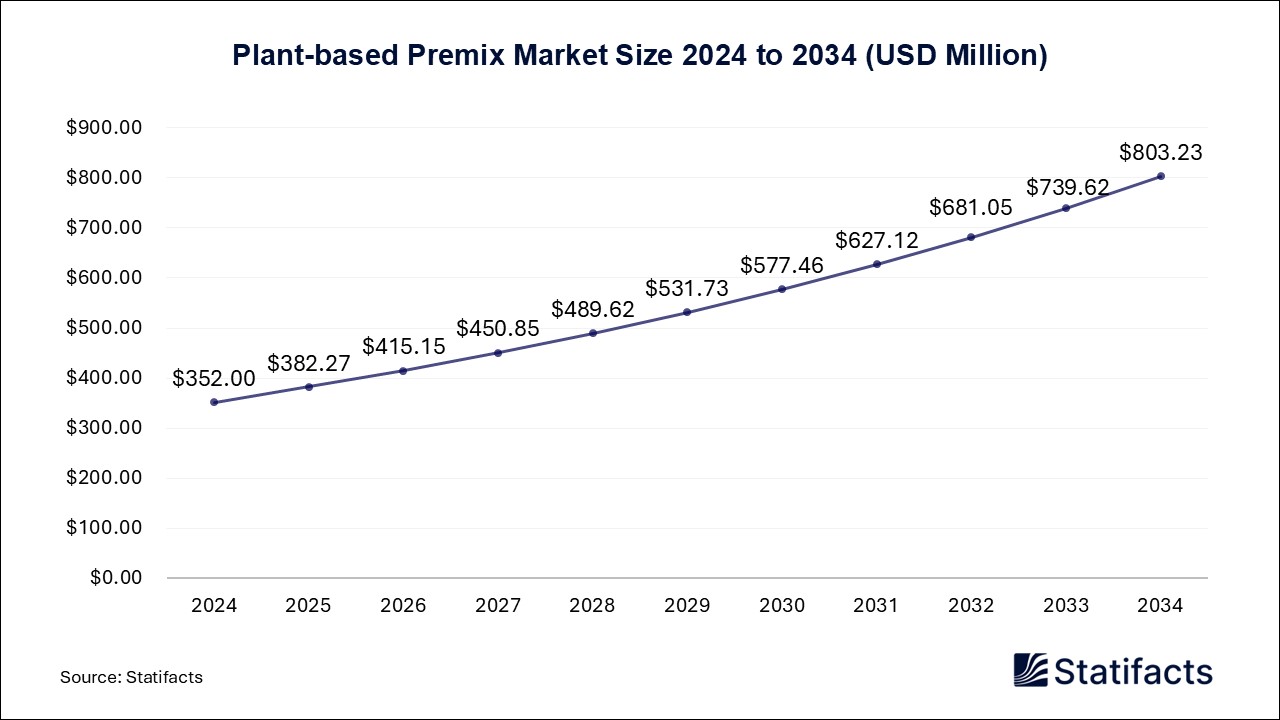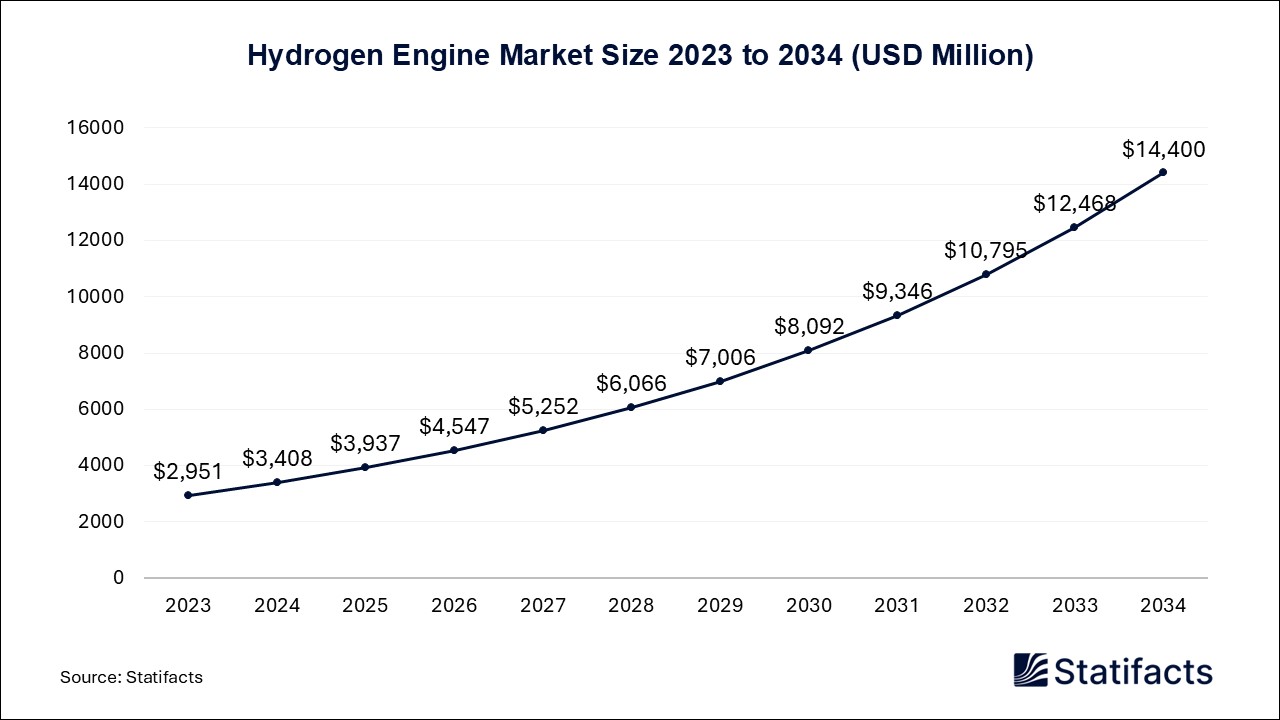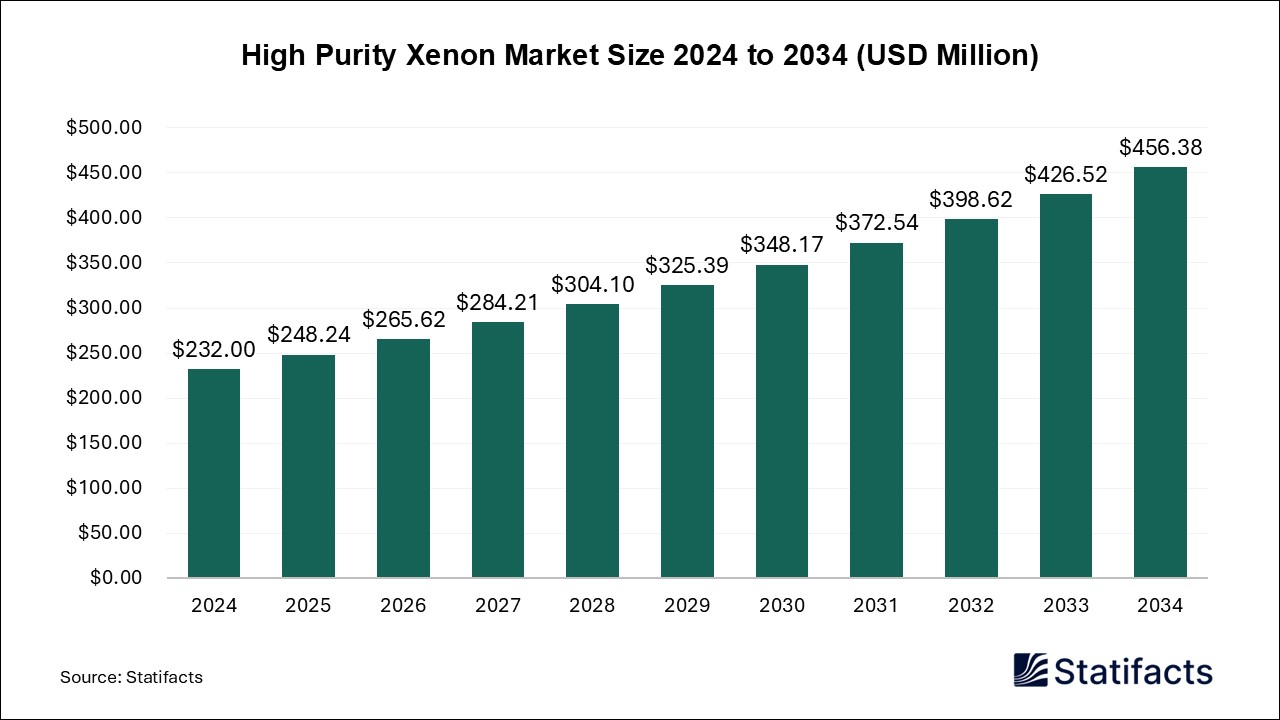Last Updated: 01 Aug 2025
Source: Statifacts
By clicking “Accept All Cookies” you agree to the storing of cookies on your device to enhance site navigation, analyze site usage, and assist in our marketing efforts.
Privacy PolicyDefense Armored Cars Market (By Product: Combat Vehicles, Combat Support Vehicles; By Type: Electric Armored Vehicles, Conventional Armored Vehicles; By Mobility: Wheeled, Tracked; By Mode of Operation: Manned Armored Vehicles, Unmanned Armored Vehicles; By Point of Sale: OEM, Retrofit; By System ; By Region: North America, Europe, Asia Pacific, Latin America, Middle East and Africa) — Industry Size, Share, Growth, Trends 2025 to 2034
The global defense armored cars market size was estimated at USD 32.43 billion in 2024 and is projected to be worth around USD 55.4 billion by 2034, growing at a CAGR of 5.50% from 2025 to 2034. The defense armored cars market is seeing significant growth due to geopolitical tensions, increasing defense spending in developed and emerging economies, and heightened risk of terrorism.
| Reports Attributes | Statistics |
| Market Size in 2024 | USD 32.43 Billion |
| Market Size in 2025 | USD 34.21 Billion |
| Market Size in 2032 | USD 49.77 Billion |
| Market Size by 2034 | USD 55.4 Billion |
| CAGR 2025 to 2034 | 5.50% |
| Base Year | 2024 |
| Forecast Period | 2025 to 2034 |
Defense armored cars are modified vehicles with additional armor and reinforced key areas such as ballistic glass, run-flat tires, and surveillance systems. They are developed to move personnel or goods in combat zones or high-risk areas. Armored cars are offered in many different variants such as light armored vehicles (LAVs), infantry mobility vehicles, or mine-resistant ambush protected vehicles (MRAPs), which are utilized by military and paramilitary forces. The market is supplied primarily from the national defense organizations, border protection agencies, internal security organizations, and the peacekeeping forces of other countries. Uses for defense armored cars can range from troop transport, reconnaissance, convoy protection, riot control, etc. Growth in the defense armored cars market is driven by increased border disputes, asymmetric warfare, terrorism, and civil violence.
Artificial Intelligence (AI) has been incorporated in the market to change defense armored vehicles by powering active protection systems, autonomous navigation, target recognition, and predictive maintenance. AI-integrated systems can analyze sensor data on the battlefield in real-time to determine what growing threat must be prioritized, whether to take active countermeasures against it, and notify the crew of incoming munitions. There are initiatives in NATO nations and countries such as the U.S., Russia, South Korea, Israel, and China investing heavily in AI-integrated systems in body modernization projects. Developing autonomous prototypes embedded with AI is also happening so that patrolling and logistic convoys may use an operator-free system, thus reducing crew exposure in high-risk areas.
The market trends in the defense armored cars market indicate rising defense modernization & AI integration and logistics efficiency, and predictive maintenance.
Rising defense modernization & AI integration
Across the globe, one significant accelerator is the rapid push by exhaustive militaries to modernize armored fleets that have advanced AI capabilities. Many of the defense organizations in 2024 started to exploit potential AI-enhanced capabilities in areas like command-and-control, threat detection, and active protection systems for improved lethality, force protection, and situational awareness. NATO, U.S., Israel, South Korea, China, and Russia have all sharpened their modernization efforts towards investing in AI-driven armored platforms supporting navigational autonomy, threat recognition, and augmenting crews. Ongoing modernization will be even further fueled by the significantly broader defense research and development portfolios as the services mobilize to allocate ever-increasing funds towards AI in weapons systems and ground mobility.
Logistics efficiency and predictive maintenance
Another key growth driver is the implementation of logistics optimization and predictive maintenance systems using AI within armored vehicle fleets. In 2024 and into 2025, militaries started to implement AI algorithms that can predict future requirements for maintenance through usage, sensor, and mission data, to improve efficiency and reduce idle and downtime due to maintenance and inefficiencies connected to the movement of spare parts and their availability for the unit.
Restraints in the defense armored cars market include vulnerability of AI enabled vehicles to swarm drone attacks and ethical, regulatory, and operational transparency challenges.
Vulnerability of AI enabled vehicles to swarm drone attacks
One key limitation to the employment of AI-enabled armored fighting vehicles is that they can be disabled with cheap drone swarms. In mid-2025, the U.S. Army president paused some parts of the Robotic Combat Vehicle (RCV) program, after they made the determination that expensive autonomous ground vehicles were very easy to target and neutralize with cheap aerial drone swarms. In reviewing and evaluating the RCVs and other high-end robotic platforms, they were concerned about the potential strategic value versus the cost of the high-end robotic platforms.
Ethical, regulatory, and operational transparency challenges
A further significant limitation is the ethical and regulatory complexity of deploying autonomous AI systems in warfare and the lack of accountability and transparency. In 2024, all defense bodies globally ran into problems around establishing definitive rules of engagement, ethical frameworks, and standards for international compliance relating to AI-enabled targeting and the use of autonomous vehicles. Critics of AI and other autonomous systems focus on risks related to reduced human supervision, lower levels of thresholds for the use of force, and uncertain decision-making.
Opportunities emerging in the defense armored cars market stem from the adoption of AI enabled active protection systems (APS) and regional defense programs and indigenous AI armored platforms.
Adoption of AI enabled active protection systems (APS)
There is now an opportunity to primarily improve the adoption of AI-enabled active protection systems in armored vehicles. In 2024, several countries incorporated APS using AI algorithms capable of detecting incoming projectiles and drones milliseconds before impact and activating countermeasures autonomously. Analysts predict that next-generation APS, enabled by quantum AI, federated learning, and swarm intelligence, will change vehicles from reactive defenses to proactive battlefield executioners. Armored crews and platforms are projected to receive vastly improved survivability with such systems.
Regional defense programs and indigenous AI armored platforms
An additional prospect presented here is the emergence of indigenous armored platforms with integrated AI based on the expanding defence procurement programs in Asia. Considering India, for example, the DRDO BEL “Akashteer” system is a fully AI driven automated air defence control & reporting system that entered into service in 2024 and was fielded for Operation Sindoor in 2025, achieving a reported 100% drone kill rate. As well as the larger vehicle platforms being developed as part of Project Ranjit and AAP-Wheeled/Tracked in partnership with Tata Advanced Systems, they have AI for command, sensor fusion, and autonomous operations and are expected to be deployed in late 2025. These provide examples of attractive export opportunities and potential for domestic growth from a regionally focused requirement and local production of AI integrated armored systems.
“GM Defense's next-generation Suburban Shield offers the Qatar Armed Forces unrivaled performance thanks to GM's advanced technologies. "We engineered the Suburban Shield from the ground up as a protected vehicle using GM's world-class process and tools to deliver the reliability and quality expected from a GM vehicle. We're confident the vehicle will help the Qatar Armed Forces effectively carry out their important diplomatic security missions, and we are excited to see Suburban Shield introduce a new level of sophistication to protected vehicles in the region."
“Roshel’s armored vehicles are already in service with Ukrainian forces. Producing them in Ukraine will accelerate delivery to combat units and boost the national economy. “It also provides Ukrainian manufacturers access to advanced technologies and supports the gradual integration of Ukraine’s defense industry into the broader industrial base of the free world.”
The combat vehicles segment dominated the defense armored cars market in 2024. Combat resistant mobility platforms, expedite in direct combat and offensive roles, provide the lethal force, survivability, and operational mobility necessary in the modern contact battle. Armed forces in various regions, such as Europe, Asia-Pacific, and North America, are available and supporting rising active deployment and upgrade refresh programs in 2024–2025. The demand for IFVs, light tanks, and assault gun platforms increased significantly in recent years, leading to the sales of combat vehicles to the military.
The combat support vehicles segment is anticipated to grow significantly in the forecasted period. These tactical vehicles have logistical, medical evacuation, command-and-control, and engineering roles on operations, roles that became important during sustained operations and asymmetric conflict situations. Plans in militaries "modernizing" place importance on fleet generation mobility, repairability, and sustainability, requiring highly specialized support platforms.
The conventional armored vehicles segment maintained a leading position in the market in 2024. Conventional platforms empowered by diesel or hybrid combustion engines have the distinct advantage of supporting logistical, maintenance, and crew familiarity, which is particularly valuable to defense actors during global modernization efforts. Conventional power reliance in sea and air has a significant mission advantage. Similarly, there remains limited maturity with electric technologies being used in the battlefield, with situational issues like battery range restrictions, unavailability of charging stations, and variable performance, causing widespread deployment to remain slow.
By type, the electric armored vehicles segment is predicted to witness significant growth in the market over the forecast period. The segment is driven by increasing energy efficiency, stealth operations, reduced burden on logistics, and environmental policy targets. In line with what governments have started to adopt on the citizen side, by mandating green procurement while reducing fossil fuel reliance, electric propulsion was positioned as a story of new growth. While not yet realized in absolute share, it certainly has a higher trajectory in growth, which is to say, the priorities for future armored platforms are changing.
Mode of operation insights
By mode of operation, the manned armored vehicles segment led the defense armored cars market in 2024. The continuation of traditional manned platforms would be maintained, given the requirements of command, control, and situational awareness that manned crews perform well and reliably in combat. Many militaries have upgraded their legacy manned platforms; hence, those militaries prefer to use these platforms that they are familiar with and have confidence in their future performance because they are confident in their operational resilience.
By mode of operation, the unmanned armored vehicles segment is expected to grow at a significant growth rate. Autonomous ground systems and remote-controlled vehicles became highly contemporary in the context of military R&D programs. The U.S. military was active in the Robotic Combat Vehicle (RCV) program, with prototypes like the Ripsaw M3 and Oshkosh’s modular RCV signaling that investment in unmanned platforms would accelerate. Future systems could not completely wrap around the emergence of drone swarm threats. Regardless, the speed of funding pilot programs and prototypes signals the growth of these systems. The operational interest, the availability of defence innovation grants for innovations, and technology testing increased the number of unmanned vehicles.
Point of sale insights
The OEM (original equipment manufacturer) segment dominated the point-of-sale insight in the armored vehicles market in 2024, constituting the vast majority of revenue. For defense equipment, procurement standards favor that a government be able to make direct purchases from entrenched OEMs, like BAE Systems, General Dynamics, Rheinmetall, Oshkosh, and so on, who sell fully assembled platforms with full assembly maintenance contracts. OEM sales facilitate organized systems for supply chain logistics and spare parts chains where spare parts are standardized, and repair is focused on the OEM warranty expertise--this is essential to a defense agency.
The retrofit segment that provides upgrades of existing armored vehicles had the highest growth rate as a point-of-sale category in armored vehicle upgrades during 2024. Market reports noted increased demand for modernization of legacy fleets in places with budgetary limitations or urgent capacity needs, and this makes retrofit a good value alternative. Many government clients have favored the modernization of older armored vehicles with improved armor, electronic and communication systems, compared to simply procuring new platforms, which creates operational efficacy gains with mobilization.
Asia-pacific
The Asia-Pacific region dominates the defense armored cars market due to its increased defense budgets, increasing geopolitical tensions, and security concerns, particularly along the Indo-China border and the South China Sea. Countries in this area, including China, India, South Korea, and Japan, are all incorporating new spending on military modernization programs. This applies to even more modern armored vehicles, with AI-integrated swap and connected surveillance systems, and improved mobility. The Asia Pacific region is also under constant threat of insurgency and cross-border terrorist activity, which demands the need for force mobility and protection of sensitive atrocities. Subsequent opportunities around the world are available through public-private defense partnerships, significantly export capability of indigenous systems, and lots of autonomous AI-enabled vehicle systems.
Europe
Europe is the fastest growing market for defense armored cars due to increased defense awareness resulting from the Russia-Ukraine conflict as well as assistance from NATO in increasing capability modernization and significant investments made into autonomous ground mobility. European nations such as Germany, France, Poland, and the UK all engaged in significant increases in armored vehicle procurement processes and funding, specifically with research and development spending on AI-enabled systems that aim to improve speed and protection on the battlefield. Meanwhile, various initiatives like the EU's Permanent Structured Cooperation (PESCO) and recently announced European Defence Fund (EDF) have pushed member nations to create and undertake more joint development projects that promote interoperability and develop lessen dependency on supply sovereignty with non-EU countries. Also, many member states continue to feel more threats due to hybrid warfare and cyber vulnerabilities across their nation states, which implies that there is a shift to a smarter armored vehicle market that includes intelligent and connected armored platforms.
The defense armored cars market is highly competitive. Some of the prominent companies in the market are AE Systems, BMW AG, Daimler AG (Mercedes-Benz), Elbit Systems, Ford Motor Company, General Dynamics Corporation, INKAS Armored Vehicle OEM, International Armored Group, IVECO, Krauss-Maffei Wegmann GmbH & Co. (KMW), and Lenco Industries, Inc.
There are many companies in the market, but the key players amongst them are:
BAE Systems is well established internationally with an operational presence in over 40 countries. BAE Systems specializes in the fields of defense, aerospace, and security. BAE Systems' portfolio encompasses, among other things, combat vehicles and naval ships, as well as complex systems using artificial intelligence and advanced surveillance technologies etc. The company manufactured the CV90 infantry fighting vehicle.
General Dynamics is a global producer of military and commercial-related products in both defense and aerospace. General Dynamics' portfolio includes the Stryker armored combat vehicle, Abrams Tank, submarines, and secure communication systems. The company has a presence in over 70 countries and is active in long-term military contracts.
Rheinmetall is based in Germany and operates in over 30 countries. The company produces military vehicles, munitions & ammunitions, and electronic systems. Rheinmetall produced Lynx KF41, Boxer. Rheinmetall is heavily involved in facilitating Europe's military modernization programs and emerging AI-integrated warfare systems.
| Regions | Shares (%) |
| North America | 36% |
| Asia Pacific | 34% |
| Europe | 20% |
| LAMEA | 10% |
| Segments | Shares (%) |
| Combat Vehicles | 65% |
| Combat Support Vehicles | 35% |
| Segments | Shares (%) |
| Electric Armored Vehicles | 12% |
| Conventional Armored Vehicles | 88% |
| Segments | Shares (%) |
| Wheeled | 70% |
| Tracked | 30% |
| Segments | Shares (%) |
| Manned Armored Vehicles | 82% |
| Unmanned Armored Vehicles | 18% |
| Segments | Shares (%) |
| OEM | 78% |
| Retrofit | 22% |
| Segments | Shares (%) |
| Engines | 22% |
| Drive Systems | 18% |
| Communication Systems | 16% |
| Fire Control Systems (FCS) | 14% |
| Navigation Systems | 12% |
| Others | 18% |
Published by Ajit Bansod
| Product | 2024 | 2025 | 2026 | 2027 | 2028 | 2029 | 2030 | 2031 | 2032 | 2033 | 2034 |
|---|---|---|---|---|---|---|---|---|---|---|---|
| Combat Vehicles | 21.08 | 22.27 | 23.49 | 24.75 | 26.05 | 27.39 | 28.77 | 30.19 | 31.65 | 33.15 | 34.69 |
| Combat Support Vehicles | 11.35 | 12.08 | 12.75 | 13.45 | 14.18 | 14.96 | 15.77 | 16.63 | 17.53 | 18.47 | 19.43 |
| Type | 2024 | 2025 | 2026 | 2027 | 2028 | 2029 | 2030 | 2031 | 2032 | 2033 | 2034 |
|---|---|---|---|---|---|---|---|---|---|---|---|
| Electric Armored Vehicles | 3.89 | 4.69 | 5.54 | 6.45 | 7.41 | 8.43 | 9.51 | 10.64 | 11.83 | 13.08 | 14.38 |
| Conventional Armored Vehicles | 28.54 | 29.66 | 30.70 | 31.75 | 32.82 | 33.92 | 35.03 | 36.18 | 37.35 | 38.54 | 39.74 |
| Region | 2024 | 2025 | 2026 | 2027 | 2028 | 2029 | 2030 | 2031 | 2032 | 2033 | 2034 |
|---|---|---|---|---|---|---|---|---|---|---|---|
| North America | 11.67 | 12.36 | 13.09 | 13.85 | 14.63 | 15.44 | 16.29 | 17.16 | 18.06 | 18.99 | 19.95 |
| Asia Pacific | 11.03 | 12.51 | 13.98 | 15.49 | 17.05 | 18.64 | 20.28 | 21.97 | 23.70 | 25.49 | 27.32 |
| Europe | 6.49 | 6.55 | 6.63 | 6.71 | 6.82 | 6.95 | 7.09 | 7.24 | 7.41 | 7.60 | 7.79 |
| LAMEA | 3.24 | 2.93 | 2.54 | 2.15 | 1.73 | 1.32 | 0.88 | 0.45 | 0.01 | -0.03 | -0.03 |
Last Updated: 01 Aug 2025
Source: Statifacts
| Subsegment | 2024 | 2025 | 2026 | 2027 | 2028 | 2029 | 2030 | 2031 | 2032 | 2033 | 2034 |
|---|---|---|---|---|---|---|---|---|---|---|---|
| Combat Vehicles | 21.08 | 22.27 | 23.49 | 24.75 | 26.05 | 27.39 | 28.77 | 30.19 | 31.65 | 33.15 | 34.69 |
| Combat Support Vehicles | 11.35 | 12.08 | 12.75 | 13.45 | 14.18 | 14.96 | 15.77 | 16.63 | 17.53 | 18.47 | 19.43 |
| Subsegment | 2024 | 2025 | 2026 | 2027 | 2028 | 2029 | 2030 | 2031 | 2032 | 2033 | 2034 |
|---|---|---|---|---|---|---|---|---|---|---|---|
| Electric Armored Vehicles | 3.89 | 4.69 | 5.54 | 6.45 | 7.41 | 8.43 | 9.51 | 10.64 | 11.83 | 13.08 | 14.38 |
| Conventional Armored Vehicles | 28.54 | 29.66 | 30.70 | 31.75 | 32.82 | 33.92 | 35.03 | 36.18 | 37.35 | 38.54 | 39.74 |
| Subsegment | 2024 | 2025 | 2026 | 2027 | 2028 | 2029 | 2030 | 2031 | 2032 | 2033 | 2034 |
|---|---|---|---|---|---|---|---|---|---|---|---|
| North America | 11.67 | 12.36 | 13.09 | 13.85 | 14.63 | 15.44 | 16.29 | 17.16 | 18.06 | 18.99 | 19.95 |
| Asia Pacific | 11.03 | 12.51 | 13.98 | 15.49 | 17.05 | 18.64 | 20.28 | 21.97 | 23.70 | 25.49 | 27.32 |
| Europe | 6.49 | 6.55 | 6.63 | 6.71 | 6.82 | 6.95 | 7.09 | 7.24 | 7.41 | 7.60 | 7.79 |
| LAMEA | 3.24 | 2.93 | 2.54 | 2.15 | 1.73 | 1.32 | 0.88 | 0.45 | 0.01 | -0.03 | -0.03 |
This market involves military-grade armored platforms, such as IFVs, APCs, MRAPs, and light tactical vehicles, used for troop transport, combat, and support roles. Rising geopolitical tensions and asymmetric threats are driving demand for these robust defense systems.
Advancement in composite and modular armor, active protection systems, electric and hybrid propulsion, autonomy, and AI-driven remote operation are transforming vehicle design. Stealthier, more efficient platforms are increasingly prioritized.
North America leads in market revenue and technological capability, driven by strong defense budgets and modernization initiatives. Meanwhile, Asia–Pacific is the fastest-growing region, fueled by expanding defense infrastructure and local manufacturing.
Infantry fighting vehicles (IFVs) and armored personnel carriers (APCs) hold the largest share of deployments, while demand for MRAP vehicles grows rapidly due to evolving protections against IED threats in asymmetric environments. Unmanned and remote-operated combat support vehicles also gain traction.
High acquisition and life-cycle costs, complex logistics, export restrictions, and procurement delays remain key constraints. At the same time, opportunities emerge via retrofitting legacy fleets, expanding electric and autonomous vehicle lines, and forming international partnerships to co-produce platforms.
To get full access to our Market Insights, you need a Professional Account or a Business Suite.

You will receive an email from our Business Development Manager. Please be sure to check your SPAM/JUNK folder too.

You will receive an email from our Business Development Manager. Please be sure to check your SPAM/JUNK folder too.

Our customers work more efficiently and benefit from



